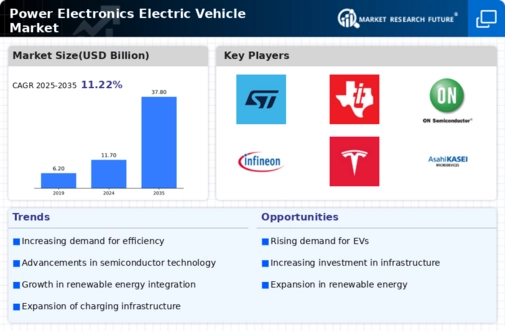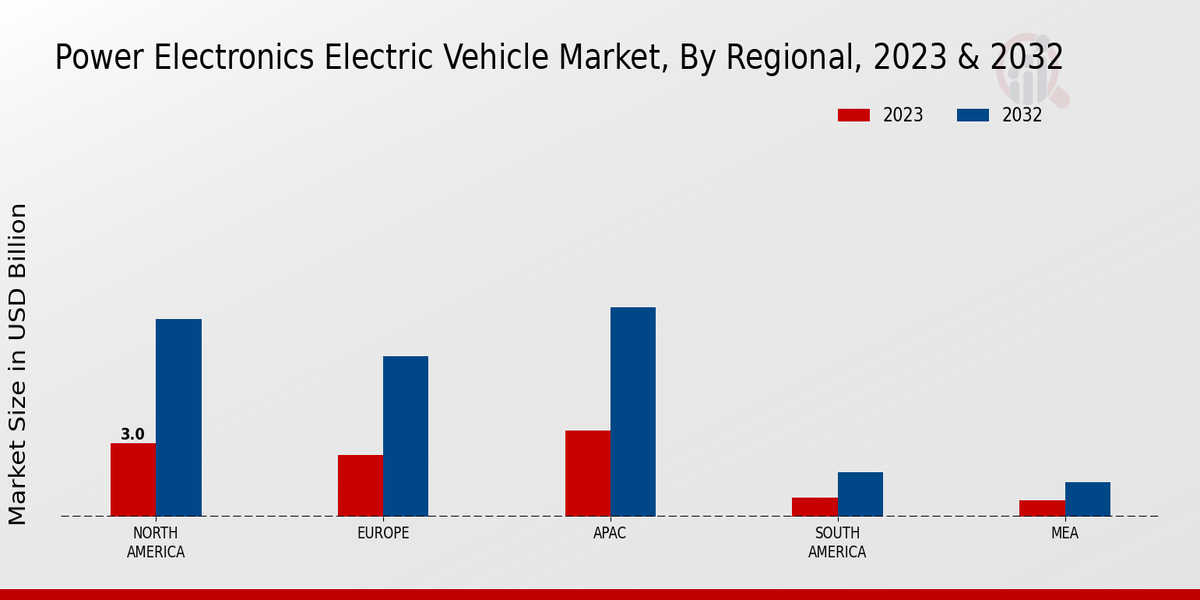Market Growth Projections
The Global Power Electronics Electric Vehicle Market Industry is projected to experience substantial growth over the next decade. With a compound annual growth rate (CAGR) of 11.23% anticipated from 2025 to 2035, the market is expected to expand from 11.7 USD Billion in 2024 to an impressive 37.8 USD Billion by 2035. This growth trajectory suggests a robust demand for power electronics solutions tailored for electric vehicles, driven by technological advancements, consumer preferences, and regulatory frameworks. The market's evolution reflects a broader shift towards sustainable transportation, indicating a promising future for stakeholders in the industry.
Government Incentives and Support
Government incentives play a crucial role in stimulating the Global Power Electronics Electric Vehicle Market Industry. Various countries are offering tax credits, rebates, and subsidies to encourage the adoption of electric vehicles. These financial incentives lower the overall cost of ownership, making electric vehicles more appealing to consumers. Additionally, governments are investing in charging infrastructure, which is vital for alleviating range anxiety among potential buyers. As these initiatives continue to expand, they are expected to significantly contribute to the market's growth, fostering a more sustainable transportation ecosystem.
Growing Demand for Electric Vehicles
The increasing global demand for electric vehicles is a primary driver of the Global Power Electronics Electric Vehicle Market Industry. As consumers become more environmentally conscious, the shift towards electric mobility accelerates. In 2024, the market is projected to reach 11.7 USD Billion, reflecting a significant rise in adoption rates. Governments worldwide are implementing stringent emission regulations, further propelling the transition to electric vehicles. This trend is expected to continue, with projections indicating that by 2035, the market could expand to 37.8 USD Billion, showcasing the robust growth potential within the industry.
Rising Fuel Prices and Economic Factors
The volatility of fuel prices is another significant driver influencing the Global Power Electronics Electric Vehicle Market Industry. As traditional fuel costs rise, consumers are increasingly seeking alternatives that offer long-term savings. Electric vehicles present a compelling solution, as they typically have lower operating costs compared to their gasoline counterparts. This economic shift encourages consumers to consider electric vehicles as a viable option. Furthermore, the growing awareness of the total cost of ownership associated with electric vehicles is likely to enhance their attractiveness, thereby contributing to the market's expansion.
Technological Advancements in Power Electronics
Technological innovations in power electronics are pivotal in enhancing the performance and efficiency of electric vehicles. The Global Power Electronics Electric Vehicle Market Industry benefits from advancements such as improved semiconductor materials and more efficient power conversion systems. These innovations lead to lighter, more compact, and cost-effective solutions, which are essential for the widespread adoption of electric vehicles. As manufacturers integrate cutting-edge technologies, the overall efficiency of electric drivetrains improves, potentially increasing the range and performance of electric vehicles. This trend is likely to attract more consumers, further driving market growth.
Environmental Regulations and Sustainability Goals
Stricter environmental regulations and sustainability goals set by governments worldwide are propelling the Global Power Electronics Electric Vehicle Market Industry. As nations strive to meet climate targets, the transition to electric vehicles becomes imperative. These regulations often mandate reductions in greenhouse gas emissions, pushing automakers to invest in electric vehicle technology. The increasing emphasis on sustainability is not only shaping consumer preferences but also influencing corporate strategies within the automotive sector. As a result, the market is poised for substantial growth, driven by the collective efforts to create a greener future.
















